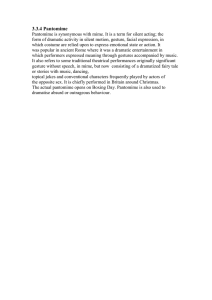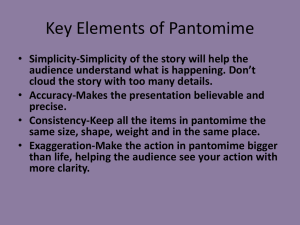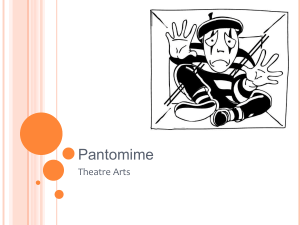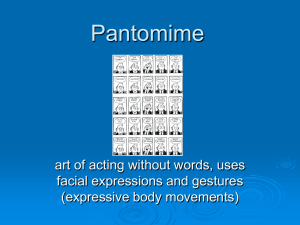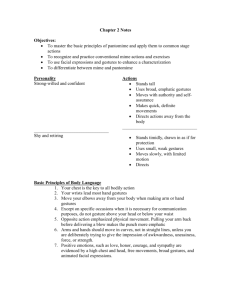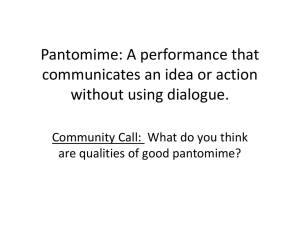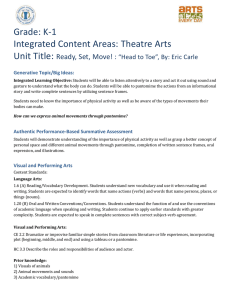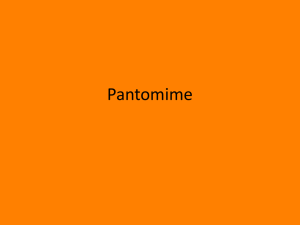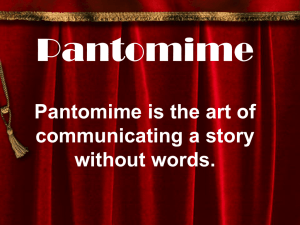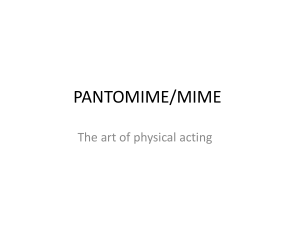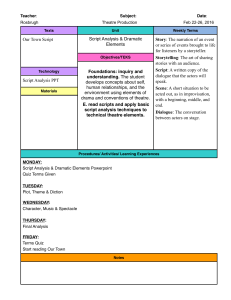Pantomime - amandaroberts
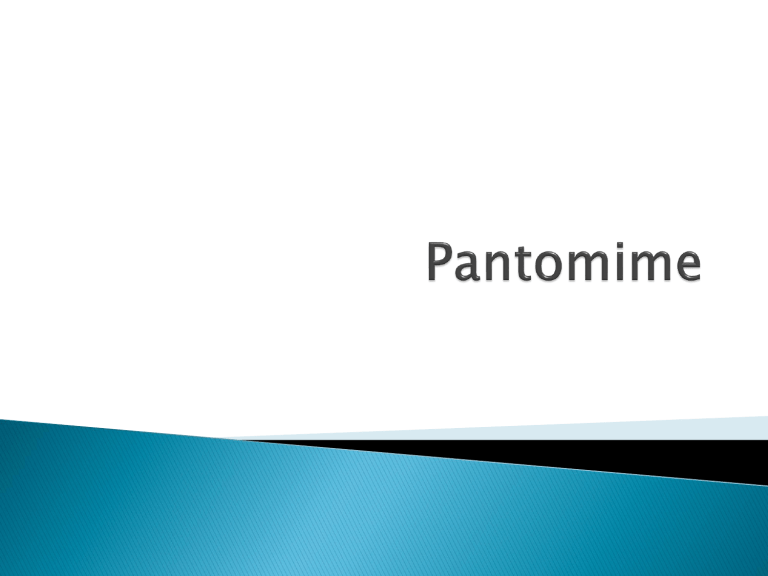
Pantomime is acting without words by using facial expressions and gestures, expressive movements of the body or limbs. The term is used to cover several different types of movement
For successful stage pantomime you need to use your facial expressions and body movements to communicate your reactionsphysical and emotional-to characters, events, objects, and environments
Pantomime is often called the art of silence.
The art of pantomime is basic to your training as an actor, because a character is portrayed through gestures, facial expressions, and movement- the first things an audience notices.
Pantomime goes hand in hand with dance and was the forerunner of classical ballet
Pantomime was the first form of acting.
The techniques of pantomime are based on what human beings do physically in response to emotional stimulation, other people, and the objects around them.
No sound is used
There are two phases
◦ Relax your muscles and free your body for quick expression of feeling
◦ Creation of characterizations in which feeling prompts a bodily response
The modern tradition of mime, based on the technique of pantomime, is an abstract art form employing exaggerated conventionalized gestures to express ideas rather than to represent actions.
The formal art of mime emerged in the early
1800s, when Jean-Baptiste Gaspard Deburau began the process of refining the Commedia
Dell’Arte slapstick style of pantomime.
Today’s most famous mime, Marcel Marceau, was inspired by the great silent film comedians Charlie Chaplin and Buster
Keaton.
He developed a character called Bip.
Because of Marceau, the art of mime has become more popular.
Marceau has stated that he feels mime has become popular because it has no language barriers and because it’s so simple that it can be performed anywhere
Mimes never use words
◦ Though some employ sounds
They generally wear whiteface makeup
◦ White foundation with accentuated eyes and mouth
They also wear eccentric clothing and work on a bare stage with few props
Mimes work from just five basic facial expressions
◦ Happy, sad, surprised, angry, and afraid
PANTOMIME
◦ The action conveys only action; for example, flying a kite
◦ The artist works with imaginary objects
◦ No sounds are used
◦ All pantomimes are based on reality
◦ The main goal is the exact pantomime of a specific action
MIME
◦ The action conveys the theme; for example, snagging a kite on a tree after struggling to get it soaring in the sky might be a mime’s way of saying “our aspirations often become entangled with the things of this world.”
◦ The artist works with imaginary objects by may also use part or all of the body to become an object or express an idea
◦ Nonverbal sounds, such as escaping air, a telephone busy signal, or the screech of tires may be used.
◦ Mimes go beyond reality; they are not limited to the real world
◦ The main goal is the expression of an idea; themes can often be expressed in simple terms: loneliness, young dreams, or forgiveness

